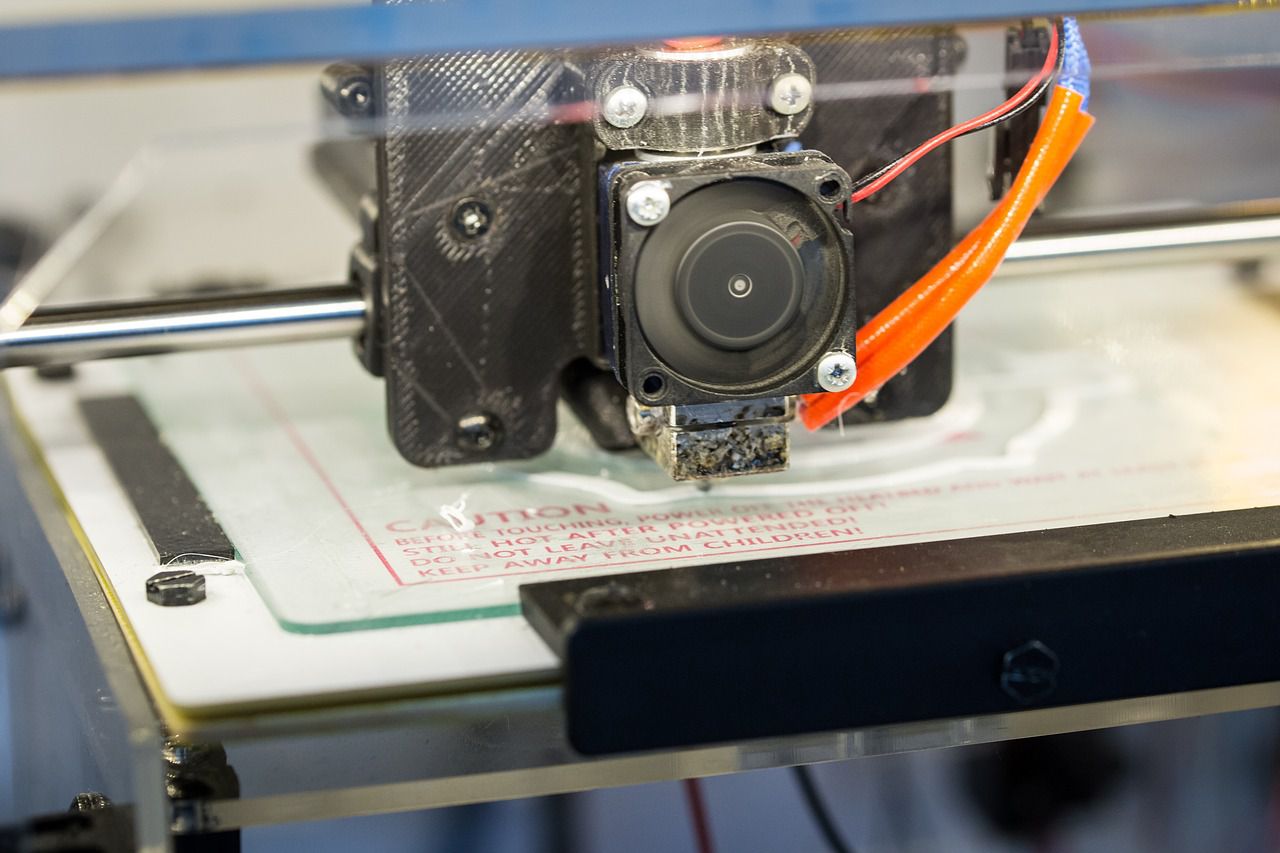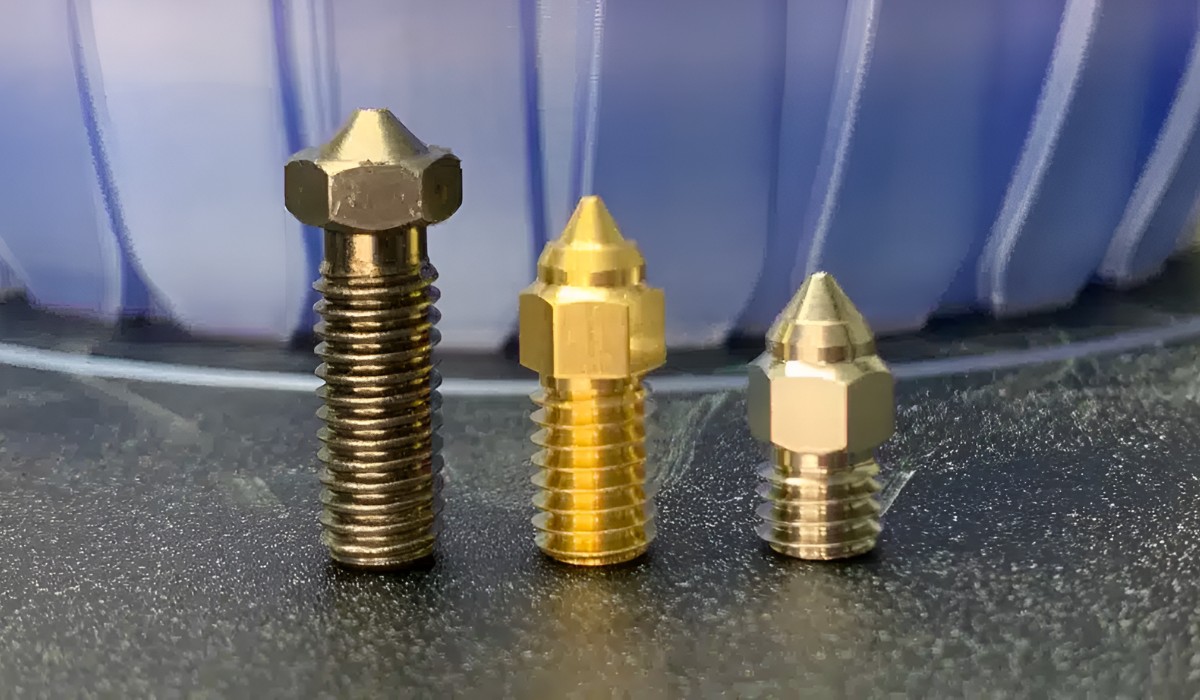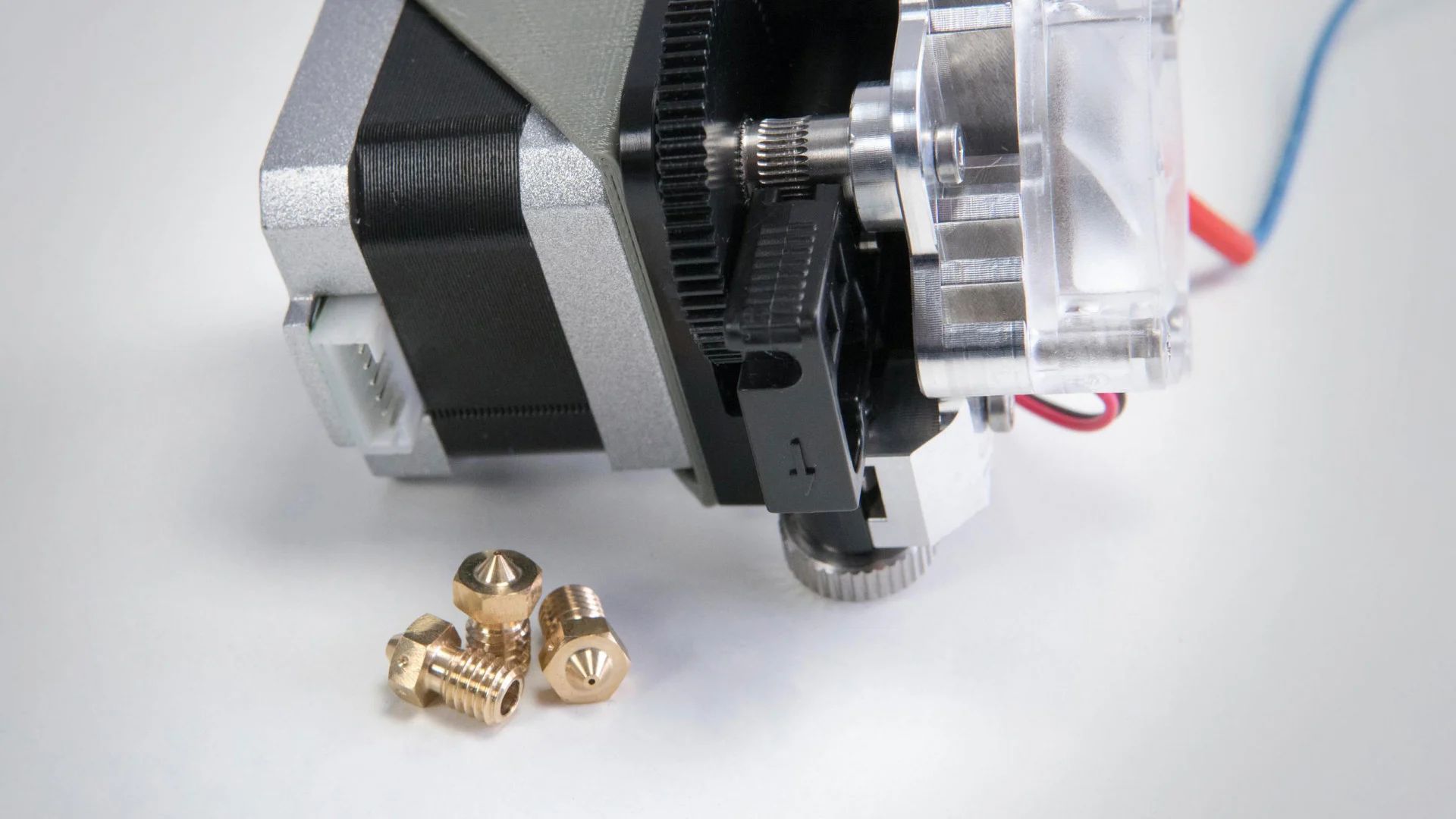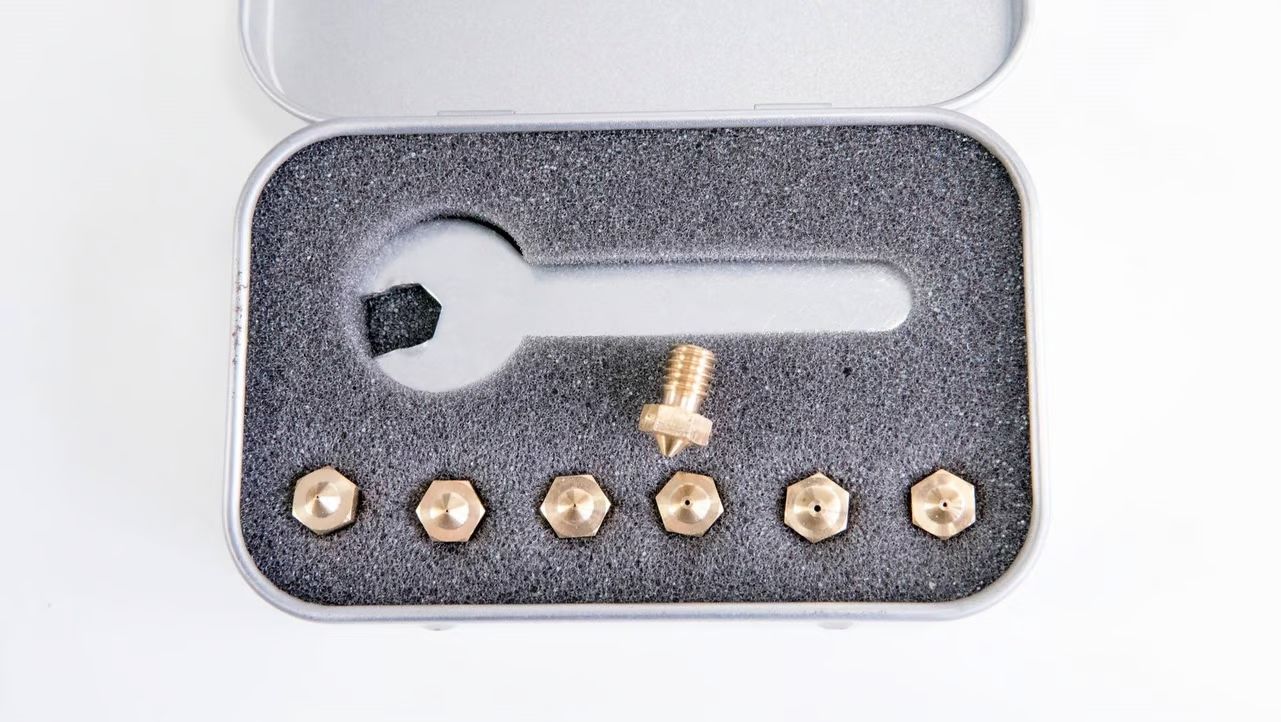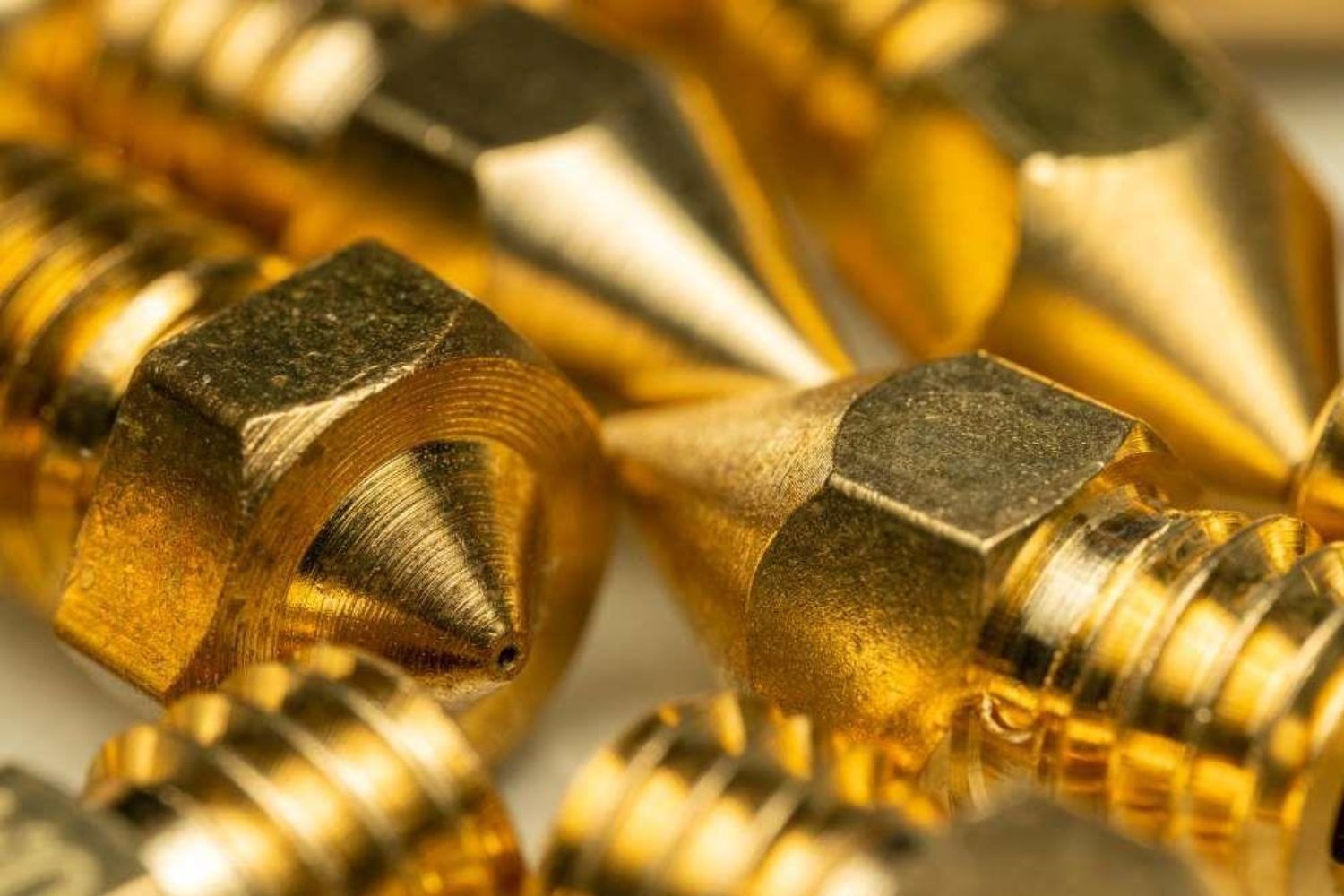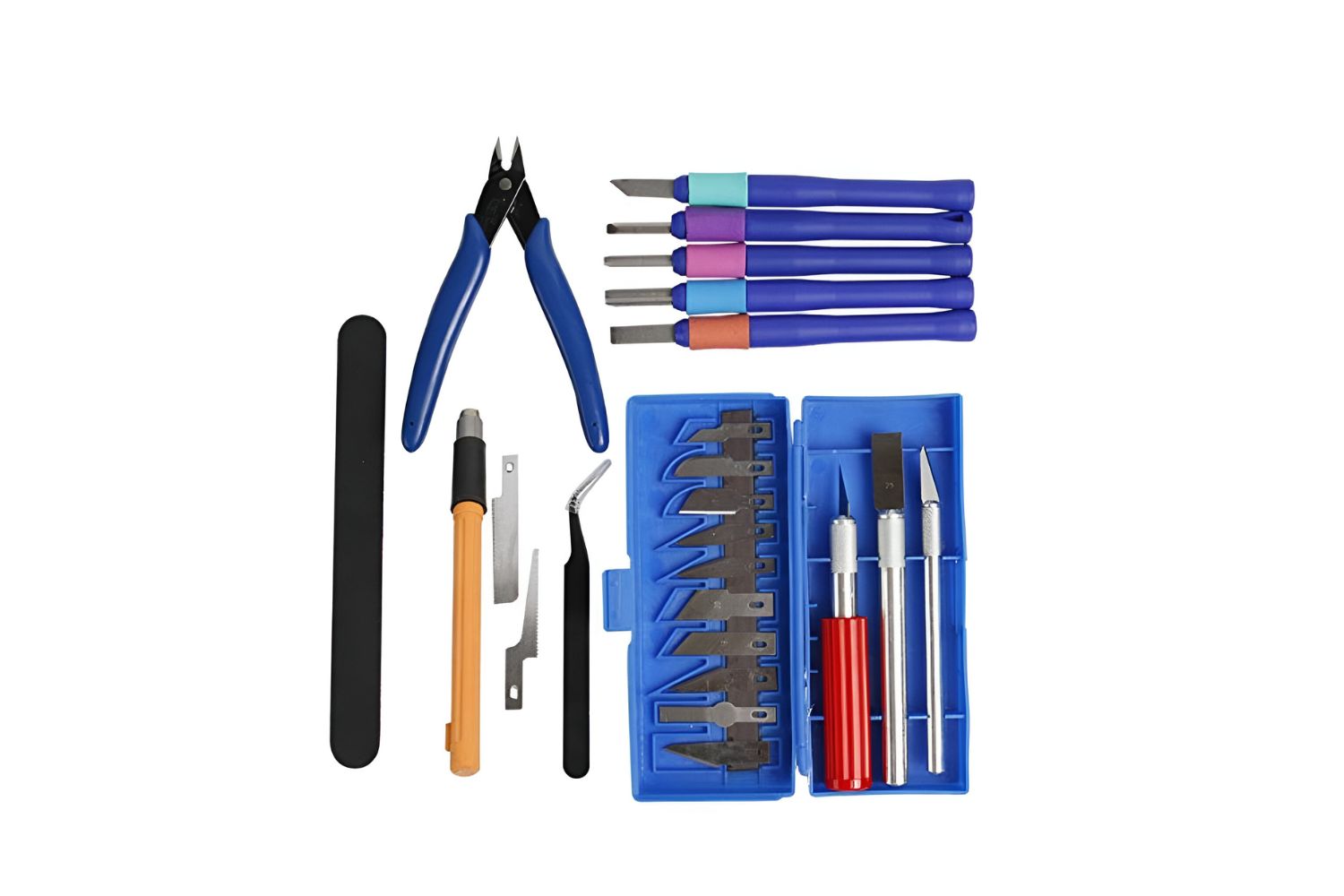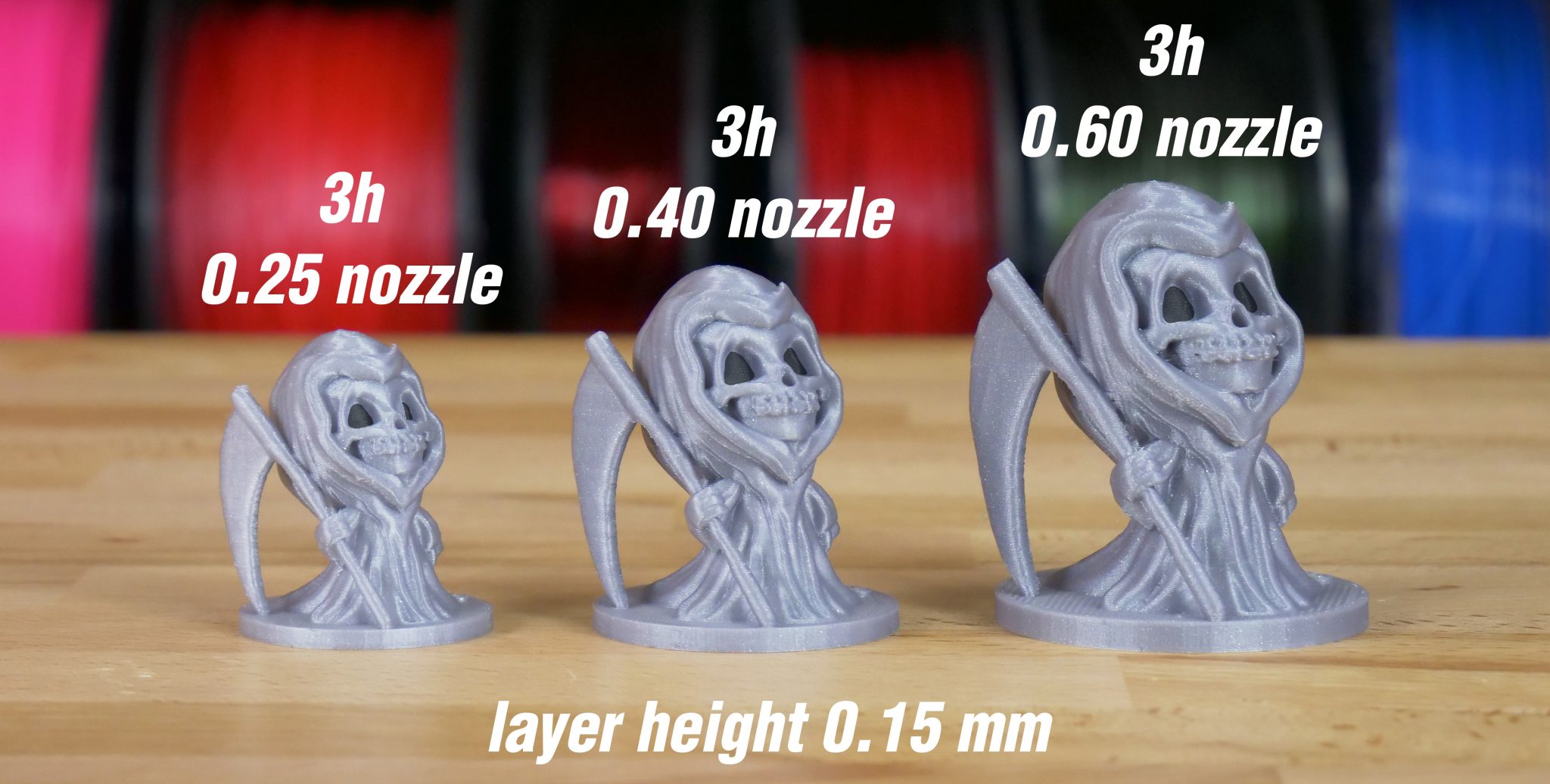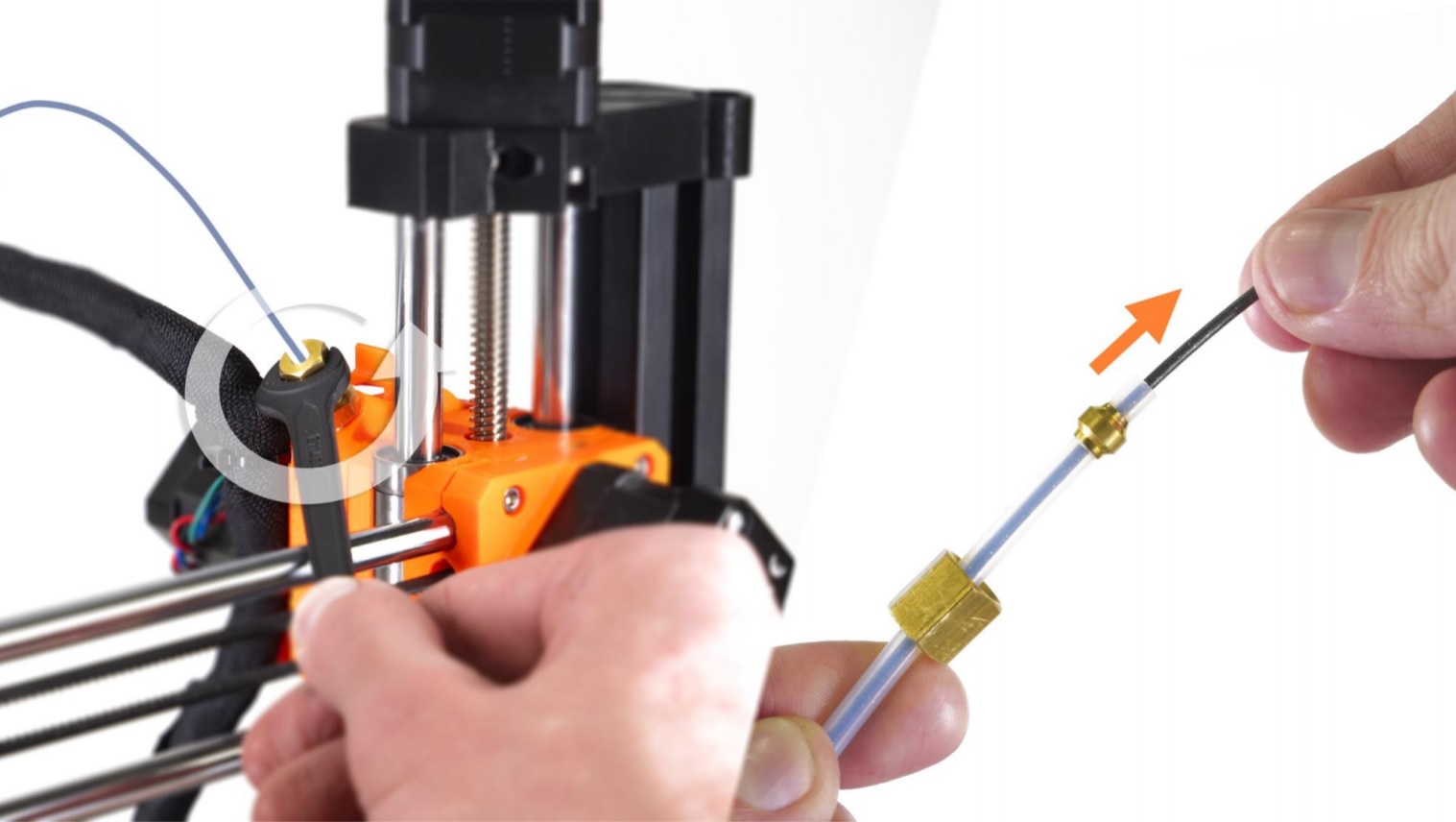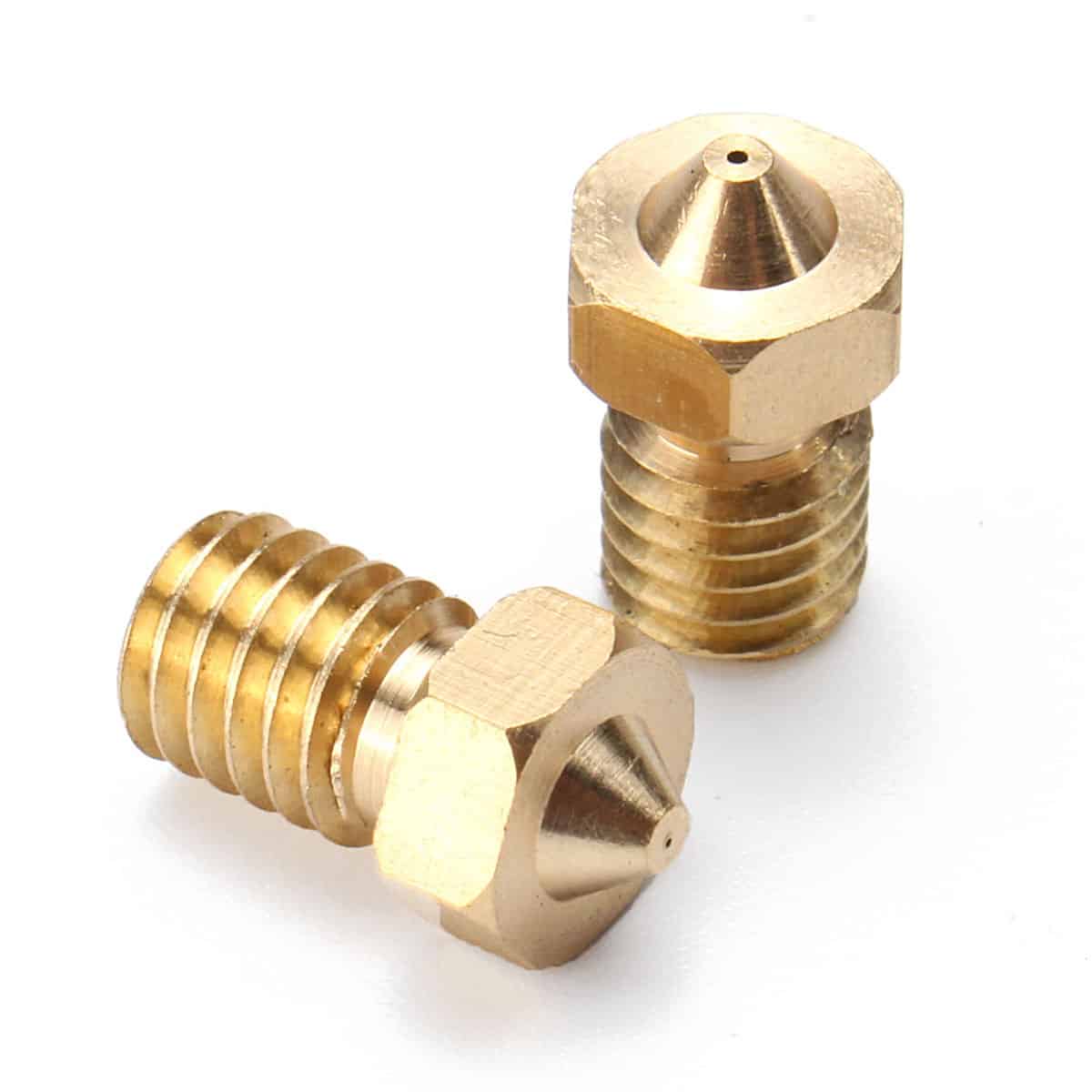Introduction
3D printers have become increasingly popular among hobbyists, professionals, and enthusiasts. These versatile machines allow you to bring your digital designs to life by printing them layer by layer. However, to ensure optimal performance and print quality, it is important to regularly maintain and replace certain components of your 3D printer.
One crucial component that requires regular attention is the 3D printer nozzle. The nozzle is responsible for extruding the filament and shaping the printed objects. Over time, the nozzle can become clogged, worn out, or damaged, which can negatively impact the print quality and even lead to print failures.
Understanding how often to change the 3D printer nozzle is key to keeping your printer running smoothly and producing high-quality prints. In this article, we will explore the reasons why it is important to change the nozzle regularly, signs that indicate it needs replacement, factors that affect nozzle lifespan, step-by-step instructions on how to change the nozzle, and tips to extend the nozzle’s lifespan.
Whether you are a seasoned 3D printing enthusiast or a beginner, this guide will provide you with valuable insights to ensure optimal performance and longevity of your 3D printer.
Why is it important to change the 3D printer nozzle regularly?
The 3D printer nozzle is a critical component that directly affects the quality of your prints. Over time, it can accumulate residue, become clogged with debris, or wear out, leading to a range of issues. Here are some reasons why it is crucial to change the 3D printer nozzle regularly:
- Maintain print quality: A worn-out or clogged nozzle can result in poor print quality, including rough surfaces, stringing, or inconsistent layers. By changing the nozzle regularly, you ensure that filament flows smoothly, allowing for precise and clean prints.
- Prevent clogs: As you print, small particles from the filament can accumulate within the nozzle, gradually obstructing the passage and causing clogs. Regularly changing the nozzle minimizes the risk of clogs, reducing print failures and the need for time-consuming troubleshooting.
- Optimize filament compatibility: Different filaments have varying viscosity and temperature requirements. If you frequently switch between filaments, it is essential to have a clean and properly calibrated nozzle to ensure smooth extrusion and prevent material compatibility issues.
- Extend the lifespan of other components: When a nozzle is not functioning properly, it can put additional strain on other parts of the printer, such as the extruder or heating elements. By regularly changing the nozzle, you reduce the likelihood of damage to these components, prolonging their lifespan.
- Save time and money: A clogged or worn-out nozzle can lead to failed prints, wasting filament and time. By regularly replacing the nozzle, you minimize the chances of print failures, saving both material and valuable hours of troubleshooting.
By understanding the importance of regularly changing the 3D printer nozzle, you can maintain consistent print quality, prevent issues, and prolong the lifespan of your printer’s components. Investing the time and effort in nozzle maintenance will ultimately save you time, money, and frustration in the long run.
Signs that indicate you need to change the 3D printer nozzle
The 3D printer nozzle plays a crucial role in the print process, and it is important to recognize the signs that indicate it needs to be replaced. Here are some common signs that suggest it is time to change the 3D printer nozzle:
- Poor print quality: If you notice a decrease in print quality, such as inconsistent layers, rough surfaces, or excessive stringing, it could be a sign that the nozzle is worn out or clogged. Changing the nozzle can significantly improve print quality.
- Difficulty extruding filament: A nozzle with accumulated debris or a smaller opening due to wear might have difficulty extruding filament consistently. If you experience frequent extrusion issues, such as under extrusion or filament not extruding at all, it may be time to change the nozzle.
- Frequent clogs: Clogs in the nozzle can cause interrupted or failed prints. If you find yourself regularly dealing with nozzle clogs, despite proper filament handling and maintenance, it is a strong indication that the nozzle needs to be replaced.
- Uneven or inconsistent flow: When the nozzle is no longer functioning optimally, you may notice inconsistent flow of filament during the printing process. This can result in uneven layers, gaps, or blobs in the final print. Changing the nozzle can help restore smooth and consistent flow.
- Visible damage: Inspect the nozzle visually for any visible signs of physical damage, such as dents, scratches, or erosion. These damages can affect the extrusion process and lead to print problems. If you spot any damage, it is recommended to replace the nozzle.
Being aware of these signs allows you to identify when it is necessary to change the 3D printer nozzle. Regularly monitoring the nozzle’s condition and responding to these signs promptly will help you maintain consistent print quality and minimize printing issues.
How often should you change the 3D printer nozzle?
The frequency of changing the 3D printer nozzle depends on several factors, including the type of filament used, the printing volume, and the manufacturer’s recommendations. While there is no one-size-fits-all answer, there are general guidelines to help you determine how often you should change the 3D printer nozzle:
- Filament type: Abrasive filaments, such as those with carbon fiber or metal particles, can wear down the nozzle faster compared to standard filaments like PLA or ABS. If you frequently use abrasive filaments, you may need to change the nozzle more frequently.
- Printing volume: The more you use your 3D printer, the faster the nozzle can accumulate residue and wear out. If you have a high printing volume or run your printer continuously, you may need to change the nozzle more frequently than someone with occasional printing needs.
- Print quality issues: If you notice a decline in print quality or experience frequent clogs despite proper maintenance, it may be an indicator that the nozzle needs replacement. Pay attention to these issues and consider changing the nozzle if they persist.
- Manufacturer recommendations: Check the documentation provided by the printer manufacturer for specific guidelines on nozzle replacement. Some manufacturers may recommend a certain number of printing hours or specific intervals for changing the nozzle.
As a general rule of thumb, it is recommended to inspect the nozzle regularly and consider changing it every 3 to 6 months for standard filaments and every 1 to 3 months for abrasive filaments or high printing volume. However, it is essential to monitor the print quality and performance of your printer and adjust the replacement frequency accordingly.
By staying attentive to filament type, printing volume, and any performance issues, you can determine the appropriate interval for changing the 3D printer nozzle. Regular maintenance and timely replacement of the nozzle will help ensure optimal print quality and prolong the life of your printer.
Factors that affect the lifespan of a 3D printer nozzle
The lifespan of a 3D printer nozzle is influenced by various factors that can impact its durability and performance. Being aware of these factors can help you understand how to maximize the lifespan of your nozzle. Here are some key factors that affect the lifespan of a 3D printer nozzle:
- Filament composition: The type of filament you use can significantly impact the nozzle’s lifespan. Some filaments, such as PLA or ABS, are generally non-abrasive and have minimal impact on nozzle wear. However, filaments with additives like carbon fiber, metal particles, or wood fillers can be highly abrasive and cause faster nozzle degradation.
- Printing temperature: The temperature at which you print can affect the nozzle’s lifespan. Higher temperatures can accelerate nozzle wear, especially if you consistently print at the upper temperature range. It is essential to find the right balance between temperature and print quality to minimize wear on the nozzle.
- Printing speed: Faster printing speeds can put more stress on the nozzle, potentially causing faster wear. Higher speeds can lead to increased friction and heat, which can affect both the nozzle tip and internal threads. It is important to find a speed that balances print quality and nozzle longevity.
- Printer maintenance: Proper maintenance and care can significantly impact the lifespan of the nozzle. Regularly cleaning the nozzle, ensuring proper filament loading and unloading procedures, and keeping the printer components in good condition can help extend the nozzle’s lifespan.
- Printing volume: The amount of printing you do can affect how quickly the nozzle wears out. If you have a high printing volume, the nozzle is subjected to more wear and tear due to prolonged use. Consider adjusting your maintenance and replacement schedule accordingly if you have a high printing volume.
Understanding these factors and how they affect the lifespan of a 3D printer nozzle can help you make informed decisions regarding filament selection, printing settings, and maintenance routines. By taking proper care of your nozzle and considering these factors, you can optimize its lifespan and ensure consistent performance throughout your 3D printing journey.
How to change the 3D printer nozzle step-by-step
Changing the 3D printer nozzle may seem intimidating, but with the right steps, it can be a straightforward process. Here is a step-by-step guide on how to change the 3D printer nozzle:
- Prepare your workspace: Ensure you have a clean and well-lit area to work in. Gather the necessary tools, including a wrench or socket that fits the nozzle.
- Heat up the printer: Heat up your 3D printer to the recommended temperature for removing the nozzle. This temperature varies depending on the printer and filament type, so refer to your printer’s documentation for guidance.
- Unload the filament: Once the printer is heated, unload the filament by following the printer’s specific instructions. This typically involves navigating the printer’s menu or using software to feed the filament back out of the nozzle.
- Disconnect the nozzle: Use a wrench or socket to loosen and disconnect the nozzle from the heater block. Turn the nozzle counterclockwise until it is loose enough to remove.
- Replace the nozzle: Take the new nozzle and insert it into the heater block. Make sure it is properly aligned and tighten it by turning it clockwise using the wrench or socket. Avoid overtightening, as it can damage the nozzle or block.
- Load the filament: Once the new nozzle is securely in place, follow your printer’s instructions to load the filament back into the extruder. Make sure it is properly fed through the nozzle and ready for printing.
- Perform a test print: Before starting a full print, it is always a good idea to perform a test print to ensure the new nozzle is properly installed and calibrated. Check the print’s quality and make any necessary adjustments before proceeding with your intended print.
Remember to refer to your specific printer’s documentation for any model-specific steps or recommendations. It’s also important to exercise caution when working with heated components and to follow safety guidelines provided by the manufacturer.
By following these steps, you can confidently change the 3D printer nozzle, allowing for improved print quality and longevity of your printer.
Tips to prolong the lifespan of your 3D printer nozzle
Taking proactive steps to care for your 3D printer nozzle can help extend its lifespan and maintain optimal print quality. Here are some tips to help you prolong the lifespan of your 3D printer nozzle:
- Choose the right filament: Selecting filaments that are less abrasive can minimize wear on the nozzle. Opt for standard filaments like PLA or ABS for everyday printing and reserve abrasive filaments for specific projects.
- Keep the nozzle clean: Regularly clean the nozzle to remove any debris or residue that can clog or impact its performance. Use a soft brush or filament cleaning tool to gently clean the nozzle and ensure smooth filament flow.
- Proper filament loading and unloading: Follow the manufacturer’s guidelines for loading and unloading filament to reduce stress on the nozzle. Avoid applying excessive force, as it can damage the nozzle or cause misalignment.
- Monitor and adjust printing temperature: Ensure that you are printing at the recommended temperature range for the filament you are using. Excessively high temperatures can accelerate nozzle wear, while printing at too low temperatures can cause printing issues.
- Optimize printing speed: Find the right balance between speed and print quality to avoid excessive stress on the nozzle. Experiment with different speeds to find the optimal setting for your prints.
- Perform regular maintenance: In addition to cleaning the nozzle, regularly inspect your printer for any signs of wear or damage. Check for loose screws, belt tension, and other components that may impact the nozzle’s performance.
- Use nozzle-friendly tools: When removing support structures or post-processing your prints, use tools that are less likely to scratch or damage the nozzle. Avoid using sharp or metal tools that can cause unintended damage.
- Stay within manufacturer guidelines: Follow the recommended guidelines provided by the printer manufacturer for nozzle care, maintenance, and replacement. Each printer model may have specific recommendations to help you prolong the nozzle’s lifespan.
By implementing these tips, you can significantly extend the lifespan of your 3D printer nozzle and ensure consistent printing performance. Regular maintenance and proper filament selection will not only save you time and money but also contribute to the longevity of your 3D printer as a whole.
Conclusion
Regularly changing the 3D printer nozzle is essential for maintaining optimal print quality and a smooth printing experience. By understanding the importance of nozzle replacement, recognizing the signs of nozzle wear, and following the recommended guidelines, you can ensure the longevity of your 3D printer and achieve high-quality prints consistently.
We discussed the reasons why it is important to change the 3D printer nozzle regularly, such as maintaining print quality, preventing clogs, optimizing filament compatibility, and saving time and money. Additionally, we explored the signs that indicate the need for nozzle replacement, including poor print quality, difficulty extruding filament, frequent clogs, uneven flow, and visible damage.
Factors that affect the nozzle’s lifespan, such as filament composition, printing temperature, printing speed, printer maintenance, and printing volume, were also discussed. It is important to consider these factors and adjust your maintenance and replacement schedule accordingly.
To change the 3D printer nozzle, we provided a step-by-step guide, including preparing the workspace, heating up the printer, unloading and loading filament, disconnecting and replacing the nozzle, and performing a test print. Following these steps will help you confidently change the nozzle and optimize printing performance.
Lastly, we offered tips to prolong the lifespan of your 3D printer nozzle, such as choosing the right filament, keeping the nozzle clean, following proper filament loading and unloading procedures, monitoring and adjusting printing temperature, optimizing printing speed, performing regular maintenance, using nozzle-friendly tools, and staying within manufacturer guidelines.
By implementing these recommendations, you can ensure that your 3D printer nozzle performs optimally and continues to produce high-quality prints for a longer period of time. Regular maintenance and timely nozzle replacement will not only enhance your printing experience but also extend the overall lifespan of your 3D printer.







